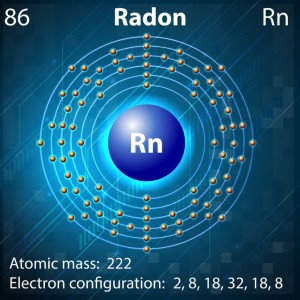 Levels of radon, the second-leading cause for the development of lung cancer, are particularly high in homes at Pennsylvia, an alert made by researchers from the Johns Hopkins Bloomberg School of Public Health. The presence of radon has been high since 2004, since the time natural gas wells started being drilled in the state by the fracking industry, but new research conducted at the school revealed even more alarming levels.
Levels of radon, the second-leading cause for the development of lung cancer, are particularly high in homes at Pennsylvia, an alert made by researchers from the Johns Hopkins Bloomberg School of Public Health. The presence of radon has been high since 2004, since the time natural gas wells started being drilled in the state by the fracking industry, but new research conducted at the school revealed even more alarming levels.
The study “Predictors of Indoor Radon Concentrations in Pennsylvania 1989-2013,” which was recently published in the Environmental Health Perspectives journal, demonstrated that 42% of homes in Pennsylvania surpass the radon levels considered safe by the U.S. government. In addition, there was a significant increase during the past decade in radon levels, an odorless radioactive gas.
“One plausible explanation for elevated radon levels in people’s homes is the development of thousands of unconventional natural gas wells in Pennsylvania over the past 10 years,” explained in a press release the leader of the study Brian S. Schwartz, MD, who serves as a professor in the Department of Environmental Health Sciences at the Bloomberg School. “These findings worry us.”
The research, which was undertaken in collaboration with the Pennsylvania’s Geisinger Health System, examined data from over 860,000 indoor radon measurements between 1989 and 2013, provided by the Pennsylvania Department of Environment Protection. In addition to radon levels, the investigators assessed the correlation between geology, water source, season, weather, community type and other factors.
The results suggest an association between radon in the region and unconventional natural gas wells drilled, an event that occurred 7,469 times in Pennsylvania between 2005 and 2013. Radon has been found in well water, natural gas and ambient air, but the majority of radon presence was associated with diffusion of the gas from soil, exposing the houses and buildings located in rural and suburban areas.
“By drilling 7,000 holes in the ground, the fracking industry may have changed the geology and created new pathways for radon to rise to the surface,” said the study’s first author Joan A. Casey, a Robert Wood Johnson Foundation Health & Society Scholar at the University of California-Berkeley and San Francisco. “Now there are a lot of potential ways that fracking may be distributing and spreading radon.”
“I don’t think we can ignore these findings. Our study can be improved by including information that was not available for our analysis, such as whether natural gas is used for heating and cooking, whether there is any radon remediation in the building, and general condition of the building foundation. But these next studies should be done because the number of drilled wells is continuing to increase and the possible problem identified by our study is not going away,” added Dr. Schwartz.
There are several ways to limit the exposure to this deadly element (which results from uranium degradation), however, the majority of people are not informed of its risk or prevention options.


